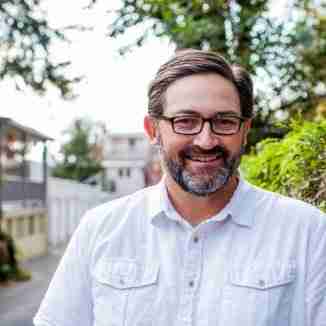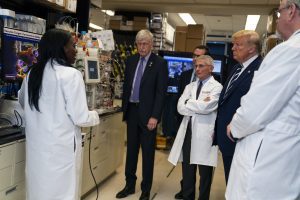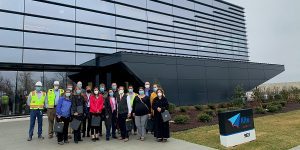
Maryland Biomanufacturing Leaders Discuss Challenges, Future Needs at 2020 Bio Innovation Conference
The BioHealth Capital Region (BHCR) is known globally as a leading vaccine hub with nearly 20% of the world’s leading vaccine development influencers in Maryland, which is the heart of the BHCR. This view of the region as a vaccine development hotbed has only been confirmed by the crucial role BHCR companies are playing in the race to find a SARS-CoV-2 vaccine.
In recent years, however, the region has started to evolve and grow. The BHCR has seen significant growth in the cell and gene therapy and regenerative medicine space and is even emerging as a micro-hub for phage therapy development. This growth in the area of personalized medicine has also brought more advanced biomanufacturing facilities to the BHCR while fundamentally changing how the region needs to look at personalized medicine manufacturing support and workforce development.
The growth of personalized medicine biomanufacturing in Maryland, in particular, is an exciting development for the entire ecosystem, but it is not without challenges. Moderator Curran Simpson, Chief Operations and Technology Officer at REGENXBIO, and a collection of expert biomanufacturing panelists discussed both the promise and the challenges facing the BHCR’s biomanufacturing landscape in their Bio Innovation Conference panel on October 6, 2020.
The panel was hosted by Uliyana Desidero, the Director of BioHealth and Life Sciences at the Maryland Department of Commerce. Expert panelists included Sean Kirk, Executive Vice President, Manufacturing and Technical Operations at Emergent BioSolutions; Tom Spitznagel, Senior Vice President, BioPharmaceutical Development and Manufacturing at MacroGenics; and Aaron Vernon, Vice President, Engineering & Supply Chain at Autolus.
Here are some of the key takeaways from their panel discussion.
Why Maryland Is Now Seen as a Strategic Biomanufacturing Location
A common thread among the panelists – other than their deep biomanufacturing expertise and experience – was their involvement in their respective company’s choices to acquire or build advanced biomanufacturing facilities in Maryland.
As Curran noted, “Maryland is now being referred to as a strategic location for manufacturing in general.” Each panelist was asked why they and their organization chose Maryland and the BHCR over other biohubs.
“Our roots in Maryland go back to it being the home of our founder…We wanted to build on that history with a desire to enhance our collaborative effectiveness not only with the U.S Government but also with the FDA, NAIAD and the Department of Defense. Biodefense preparedness is really the origin of our organization,” stated Emergent Biosolutions’ Kirk.
“Our company was founded in Maryland and our CEO has had a strong passion for keeping our manufacturing facility centrally located near our corporate headquarters….If you look at the real estate prices in other biotech hubs like San Francisco and Boston, Maryland has a substantial advantage. Even if you build within Rockville, it is still highly discounted when compared to some of those areas,” shared Macrogenics’ Spitznagel.
Vernon cited reduced costs as a motivating factor for Autolus choosing Montgomery County, Maryland for its manufacturing facility.
“As an autologous cell company we have a circular supply chain…the cost and complexity of logistics is one of our biggest drivers, so being close to Washington, DC you have access to BWI, Reagan National and Dulles airports, whereas going out into Western Maryland severely limits logistics and the cost and complexity goes up,” he stated. “One of our biggest suppliers has their East Coast distribution centers in Rockville…putting our facility in Rockville made the overall supply chain more efficient.”
Maryland Has a Deep Life Science Talent Pool, But There’s A Lot of Competition
Curran cited Operation Warp Speed and rapid growth in personalized medicine manufacturing as driving forces behind the strong competition for talent in the region. Talent attraction and recruitment remain key challenges faced by companies with advanced biomanufacturing facilities.
“We’re definitely ramping up…we are hiring over 300 people to support our three manufacturing plants and our product development facility…the ironic thing about this panel is we’re competing for talent with everyone on this panel and with many others. The competition for talent is stiff, and while the talent pool is large it is perhaps undersized to serve all the different needs…It’s an interesting challenge as we work collectively to grow Maryland as the primary epicenter of biologics and biohealth,” said Kirk.
Kirk also mentioned that it could be helpful to reform the personal income tax structure in Maryland, which would make the state and the region more attractive to talent coming from states with stronger incentive programs, like North Carolina, for example.
Spitznagel commented, “As Sean said, we’re all competing for the same talent and the workforce is undersized…we recently onboarded 50 or 60 people and we found recruiting directly out of college very successful, especially for manufacturing jobs. We have a lot of local colleges with talented individuals; we scooped them out of college, trained them, and gave them a rewarding career in manufacturing.”
“The trick is keeping attrition as low as possible because it is difficult to get those seasoned people,” he added.
In addition, the talent needs of the region are changing with the growth of cell and gene therapy and regenerative medicine manufacturing. Automation is a critical component of cell and gene therapy manufacturing, in particular, requiring companies like Autolus, to attract and retain top automation engineering talent.
“Not just in Maryland but all around the country, there are not enough automation engineers. This is always the case and we’re doing everything we can to be an employer of choice in how we train and develop people and how we give them opportunities. One of the things that are really exciting for automation engineers when it comes to a company like Autolus is that we want to go paperless on the shop floor and to run an almost fully digital supply chain,” stated Vernon. “We need to do a better job” developing automation talent in the area. “Automation engineers are worth their weight in gold” in Maryland and around the country, said Vernon.
In addition to finding the right engineering talent, hiring experienced Quality people has also been a challenge, Spitznagel noted.
The continued rise of the BHCR as a leading global BioHealth hub will help solve some of these talent challenges as the ecosystem becomes more attractive and less risky for top life science talent.
“When I look back 15 years most of the biologics staff were either at Medi or HGS but now you have more options. When you look at Emergent, Kite, Catalent, MacroGenics, GSK and others…We’re getting to the point where it is different, the risk profile of ‘If it doesn’t work out here, can I find something else?’, has changed. When we add a few thousand life science jobs in the next few years…we’re on the precipice of where people will see us like South San Francisco and Boston where talent feels they can be there for a long time,” stated Vernon.
Workforce Development Remains the Key to Sustained Biomanufacturing Growth
The panelists cited workforce development programming as an ongoing challenge for the region. Recent workforce development closures at BREP and Johns Hopkins at Shady Grove indicate a troubling trend that could impact the ecosystem.
“I think what you’re hearing from everyone here is that it’s great we have a manufacturing cluster, but there are more jobs that we all need to hire than there are people available right now. Workforce development is an area where we can work together. People like us, the State, Montgomery College, Hood, Mount St. Marys, and the University of Maryland, all of us, can do a better job of helping the workforce pipeline. This is a great use of time and effort and will pay dividends for all of us and the local economy,” shared Vernon.
“We need to drive the pipeline of talent and still focus on on-the-job-training. Part of it is I’m not sure how many college kids in the area know how big the sector is here and that it’s a viable career path., Once you handle that at the college level you can start working your way backwards to high school,” he added.
Internships, apprenticeships, and strong career training are critical to the region’s ability to create an effective future biomanufacturing workforce. Combining strong workforce development with stronger incentives to draw higher-level talent from outside the region is a recipe for sustained biomanufacturing success and growth.
Stronger Branding and Storytelling about the BHCR is Needed
The rebranding of the area as the BHCR was an important step in telling the story of the growing life science and manufacturing ecosystem in Maryland and the wider region. However, stronger branding and more effective communication of the region’s strengths and assets in other clusters will help attract more talent to the region and keep it here. The panelists all agreed that more could be done when it comes to effectively telling the region’s story beyond Maryland, Washington DC, and Virginia.
“Five or ten years ago, people would ask the question if we were a hub and many would say probably not. We are clearly a hub now; there are enough new manufacturing facilities being built and companies being established here. But to the point as to whether we are advertising enough, that’s an area we can improve on,” shared Spitznagel.
“Rebranding as the BioHealth Capital Region was a good start but do people outside the region know what’s going on? I’m not kidding when I said I woke up one day and suddenly there’s a ton of cell and gene therapy companies here…Philadelphia does a really good job of telling the world they are the hub of everything cell and gene therapy. But I’d put our base of companies up against them anyday, but maybe they do a better job of marketing,” added Vernon.
Vernon continued, “I feel like I’m out there like a cheerleader sometimes telling people in the industry to convince them why we came here and why they should do the same. We can do a better job getting together to improve the understanding across the country of what we can do here.”
- About the Author
- Latest Posts
Steve brings nearly twenty years of experience in marketing and content creation to the WorkForce Genetics team. He loves writing engaging content and working with partners, companies, and individuals to share their unique stories and showcase their work. Steve holds a BA in English from Providence College and an MA in American Literature from Montclair State University. He lives in Frederick, Maryland with his wife, two sons, and the family dog.




